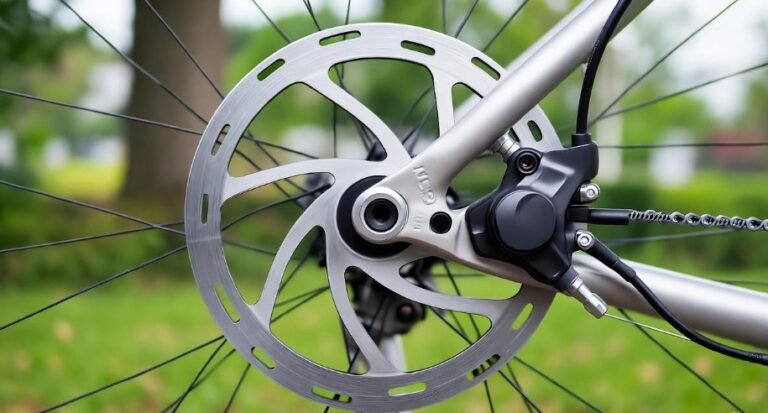How to Bleed Cooling System Dodge Ram 1500: Complete Guide for Optimal Performance

Maintaining the cooling system of your Dodge Ram 1500 is one of those tasks that often gets overlooked. Yet, it’s a critical part of keeping your engine running smoothly. Over time, air pockets can form inside the system, leading to uneven cooling, overheating, and even serious engine damage. The good news? Bleeding the cooling system is not as complicated as it sounds. With a few tools, some patience, and the right steps, you can perform this maintenance yourself, saving time and money while ensuring your truck stays reliable.
In this guide, we’ll walk you through the step-by-step process to bleed the cooling system in a Dodge Ram 1500, share helpful tips and safety precautions, and answer common questions that often confuse truck owners. By the end, you’ll have the confidence to tackle this task on your own, keeping your engine in top shape.
In This Article
- 1 Why Bleeding Your Cooling System Matters
- 2 Essential Materials You’ll Need
- 3 Step-by-Step Guide to Bleed the Cooling System
- 4 Safety Precautions and Tips
- 5 Common Mistakes to Avoid
- 6 Quick Reference Table: Cooling System Bleeding Checklist
- 7 Troubleshooting Common Issues During Bleeding
- 8 Expert Tips for Maintaining Your Cooling System
- 9 Frequently Asked Questions (FAQs)
- 9.1 How Do You Bleed the Cooling System of a Dodge Ram 1500?
- 9.2 What Happens If You Don’t Bleed the Cooling System?
- 9.3 How Often Should You Bleed the Cooling System?
- 9.4 Can I Bleed the Cooling System Myself?
- 9.5 What Type of Coolant Should I Use?
- 9.6 Why Do Air Pockets Form in the Cooling System?
- 9.7 What If the Engine Still Overheats After Bleeding?
- 10 Benefits of Regular Cooling System Maintenance
- 11 Conclusion
Why Bleeding Your Cooling System Matters
Many truck owners underestimate how much trapped air in the cooling system can affect their vehicle. Imagine trying to pour water into a bottle that already has air bubbles – the liquid never fills completely. That’s essentially what happens inside your Dodge Ram 1500’s radiator when air pockets are present. These pockets prevent coolant from circulating properly, creating hot spots in the engine that can lead to overheating.
Overheating is not just inconvenient; it’s dangerous. It can warp cylinder heads, damage gaskets, and, in severe cases, lead to engine failure. Bleeding your cooling system ensures that all the air trapped in hoses, radiators, and the engine block is removed. Once the air is gone, coolant can flow freely, maintaining the optimal engine temperature. Doing this task regularly protects your investment and gives you peace of mind, especially during long drives or in extreme weather conditions.
Essential Materials You’ll Need
Before diving under the hood, it’s crucial to gather all the materials you’ll need. Having everything ready will make the process smoother and safer. Here’s what you should have on hand:
-
A jug of recommended coolant for Dodge Ram 1500
-
A funnel to prevent spills
-
A socket wrench set for removing clamps or components if needed
-
A coolant bleed kit (optional, but helpful for speeding up the process)
-
Protective gloves and safety goggles
Using the correct coolant mixture is more important than some people realize. Your truck’s manual will specify the ratio of coolant to water – following this ensures proper heat transfer and prevents corrosion inside the system. Additionally, wearing gloves and goggles protects you from accidental spills, which can be harmful to both your skin and the environment.
Step-by-Step Guide to Bleed the Cooling System
Bleeding the cooling system in a Dodge Ram 1500 may sound intimidating, but if you follow these steps carefully, it becomes a straightforward task.
-
Ensure the Engine is Cold
Never attempt to remove the radiator cap when the engine is hot. Hot coolant can spray out, causing severe burns. Always wait until the engine is completely cool. -
Locate and Remove the Radiator Cap
On a Dodge Ram 1500, the radiator cap is on the passenger side near the front of the engine compartment. Twist it counterclockwise to remove. -
Prepare to Add Coolant
Insert a funnel into the radiator opening to prevent spillage. If you have a bleed kit, attach it to the funnel. -
Fill the Radiator Slowly
Pour coolant slowly into the funnel until the radiator is full. Watch for bubbles – these indicate trapped air escaping. Continue until bubbling stops and the level remains steady. -
Use the Bleed Valve (Optional with Kit)
If using a bleed kit, connect the hose to the bleeder valve near the thermostat housing. Follow the kit instructions to pump out remaining air. -
Replace the Radiator Cap
Twist the cap clockwise until secure. Double-check that it’s seated properly to avoid leaks. -
Start the Engine
Allow it to idle for a few minutes, monitoring the temperature gauge. If the engine rises above normal, shut it down and check coolant levels. -
Check Coolant Level Again
After the engine cools, check the coolant level once more and add more if necessary. This ensures the system is fully topped off.
Safety Precautions and Tips
While bleeding your Dodge Ram 1500 cooling system is fairly simple, safety is paramount. Here are some tips to keep in mind:
-
Wear protective gear: Always use gloves and goggles when handling coolant.
-
Use the right coolant: Check your owner’s manual for the recommended type and mixture. Using the wrong coolant can damage your engine.
-
Keep bystanders safe: Keep children and pets away from the engine bay during this maintenance.
-
Watch for persistent issues: If air bubbles or overheating persist, it may indicate a more serious problem, such as a cracked head gasket or a leaking hose. Consult a professional mechanic in these cases.
Common Mistakes to Avoid
Even experienced truck owners can make mistakes when bleeding a cooling system. Here are the most common ones and how to prevent them:
-
Opening the radiator cap too soon: This can cause hot coolant to spray and result in burns.
-
Skipping the bleed valve step: Air may remain trapped if this step is ignored, causing inefficient cooling.
-
Overfilling the radiator: Too much coolant can overflow and create a mess or even damage the system.
-
Using incorrect coolant: Always match the coolant to your Dodge Ram 1500 specifications to avoid corrosion and cooling inefficiency.
Quick Reference Table: Cooling System Bleeding Checklist
| Step | Action | Key Notes |
|---|---|---|
| 1 | Engine cold | Prevent burns |
| 2 | Remove radiator cap | Twist counterclockwise |
| 3 | Insert funnel | Optional bleed kit attachment |
| 4 | Fill coolant | Watch for bubbles |
| 5 | Use bleed valve | Remove trapped air |
| 6 | Replace cap | Ensure tight seal |
| 7 | Start engine | Monitor temp gauge |
| 8 | Recheck level | Top off if needed |
Troubleshooting Common Issues During Bleeding
Even with careful steps, you may encounter issues while bleeding your Dodge Ram 1500 cooling system. Understanding these problems and how to address them can save frustration and prevent engine damage.
-
Persistent Air Bubbles: If you notice air bubbles continuing to rise in the radiator after multiple bleed attempts, it could indicate a leak in the system, a faulty radiator cap, or a head gasket issue. Inspect hoses, clamps, and the radiator itself. If bubbles persist despite these checks, consult a professional mechanic to avoid long-term engine damage.
-
Overheating After Bleeding: If your truck continues to overheat after bleeding, double-check the coolant mixture and level. Sometimes the thermostat may be stuck closed, or there could be a blockage in the radiator. Carefully inspect these components before assuming the bleeding process was insufficient.
-
Coolant Leaks: Overfilling the radiator or improper sealing of the radiator cap can lead to leaks. Always top off gradually and ensure the cap is tightened securely. Even a small leak can lead to significant cooling problems over time.
Understanding these troubleshooting steps ensures your bleeding process is effective and your Dodge Ram 1500 stays reliable, no matter the driving conditions.
Expert Tips for Maintaining Your Cooling System
Maintaining the cooling system goes beyond just bleeding it occasionally. Here are some expert tips that Dodge Ram 1500 owners swear by:
-
Regular Coolant Replacement: Even if the system doesn’t show signs of overheating, replace the coolant every 2-3 years, or according to your owner’s manual. Old coolant loses its efficiency and can lead to corrosion inside the radiator and engine.
-
Check Hoses and Belts: During bleeding, inspect hoses for cracks, bulges, or leaks. Replace worn hoses immediately to prevent sudden failures. Belts that drive the water pump should also be checked for wear.
-
Monitor Temperature Gauge: Your temperature gauge is your first warning system. If it starts to fluctuate unexpectedly, it may indicate trapped air, a failing thermostat, or other cooling issues. Don’t ignore it.
-
Keep the System Clean: Over time, rust and debris can accumulate in your radiator and engine. Use coolant flushes periodically to clean the system and enhance efficiency.
-
Use Quality Tools: While a simple funnel can work, investing in a coolant bleed kit makes the process faster and reduces the risk of spills or missed air pockets.
Following these tips not only ensures your bleeding process is successful but also prolongs the life of your cooling system, saving money on repairs in the long run.
Frequently Asked Questions (FAQs)
How Do You Bleed the Cooling System of a Dodge Ram 1500?
To bleed the cooling system, start by filling the radiator with the recommended coolant mixture. Open the bleeder valve near the thermostat housing to allow trapped air to escape. Continue filling and monitoring until all bubbles disappear, then replace the radiator cap and start the engine to check the temperature gauge.
What Happens If You Don’t Bleed the Cooling System?
Trapped air creates hot spots in the engine, causing overheating. Over time, this can warp cylinder heads, damage gaskets, and lead to costly engine repairs. Properly bleeding the system prevents these serious issues.
How Often Should You Bleed the Cooling System?
It’s recommended to bleed the system at least once a year or whenever you notice overheating symptoms. Regular maintenance keeps the engine running efficiently and reduces the risk of sudden failures.
Can I Bleed the Cooling System Myself?
Yes, bleeding a Dodge Ram 1500 cooling system is a task you can do yourself with basic tools and a little patience. Just follow the step-by-step instructions carefully and take safety precautions.
What Type of Coolant Should I Use?
Always use the coolant type specified in your owner’s manual. Typically, Dodge Ram 1500s require a 50/50 mixture of antifreeze and distilled water. Using the wrong type can lead to corrosion and reduced cooling efficiency.
Why Do Air Pockets Form in the Cooling System?
Air pockets can form after coolant replacement, hose repairs, or leaks in the system. Even a small amount of trapped air can reduce cooling efficiency and lead to overheating.
What If the Engine Still Overheats After Bleeding?
Persistent overheating may indicate a more serious issue like a stuck thermostat, radiator blockage, or head gasket failure. At this stage, it’s best to consult a professional mechanic to avoid severe engine damage.
Benefits of Regular Cooling System Maintenance
Taking the time to bleed and maintain your Dodge Ram 1500 cooling system has several long-term benefits:
-
Enhanced Engine Performance: A properly cooled engine runs more efficiently, delivering consistent power without risk of overheating.
-
Extended Engine Life: Preventing hot spots and corrosion reduces wear on critical engine components.
-
Cost Savings: Regular maintenance minimizes the need for expensive repairs related to overheating or engine damage.
-
Improved Fuel Efficiency: Engines that operate at optimal temperatures consume fuel more efficiently, saving money at the pump.
Bleeding the cooling system may seem like a minor task, but it’s an essential part of vehicle care that pays off with improved performance and reliability.
Conclusion
Bleeding the cooling system of your Dodge Ram 1500 is a simple yet vital maintenance task. By following the step-by-step guide, using the right tools, and observing safety precautions, you can ensure that your truck’s engine runs smoothly and avoids overheating. Regularly performing this task, along with general cooling system maintenance, extends the life of your engine, improves performance, and prevents costly repairs.
Remember, a well-maintained cooling system is like a well-tuned heart for your Dodge Ram 1500 – it keeps everything running at the right temperature and ensures you can enjoy every drive without worry. Whether you’re a weekend warrior or a daily commuter, taking the time to bleed your cooling system is an investment in reliability, safety, and peace of mind.





